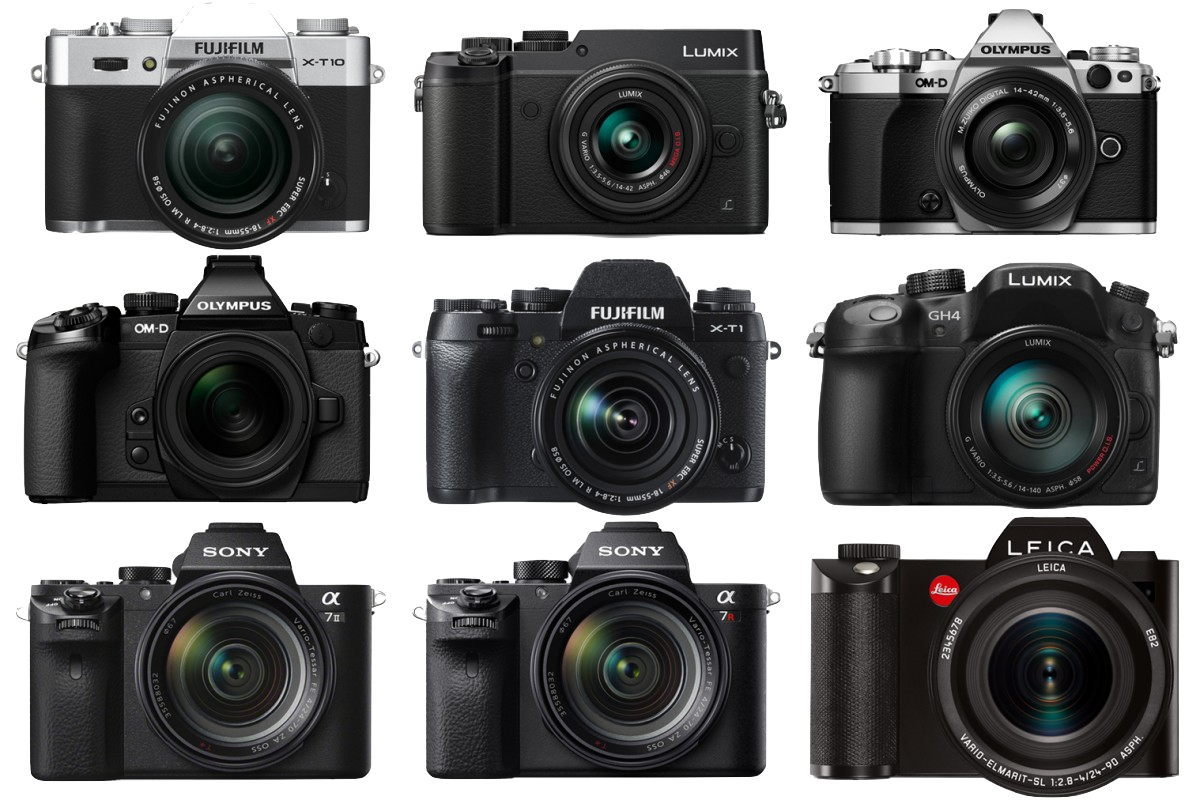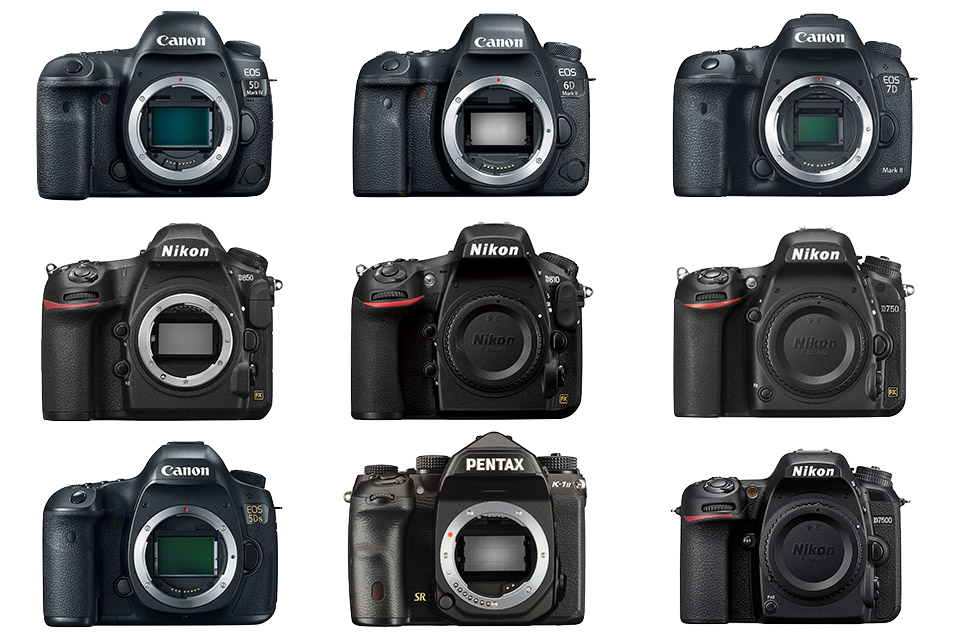Determining the best camera for *you* will always require some reflection and consideration. It shouldn't come as a surprise that the answer to “what camera should I buy” isn't as straightforward as “click here”.
To narrow down the right camera for you will start by asking yourself: what do I want to take pictures of most? Perhaps it’s your family and friends, special events, or even travel and landscapes. It could be one or more of those listed, or something else. However, identifying 1-2 of your favorite subjects will prove helpful when making a final choice.
The most common reply is: “Well.. I’d like to photograph a little bit of everything” or “I’m not sure”, which is 100% ok! In those instances we’ll have suggestions of general purpose cameras that work well for many situations and subjects. Just make sure to check out outr updated list of “Cameras we love - 2021”
Ok, enough talking, let’s get down to business.
Price
Sadly money doesn't grow on trees so for most of us, price will be one of the main considerations when selecting a camera. But the BPW would like to tell you a little secret.. Expensive cameras don’t make better photos. It’s a fact, the best camera in the world can still make a lousy picture. We think the right tool doesn't need to be expensive.
Our suggestion: Look for last year's model or for refurbished cameras. We’ve had great success with Canon Refurbished cameras (and lenses) Nikon Refurbished, and BH Used Gear. 360 days is rarely a time frame where cameras suddenly change into something amazing. Simply put: last year’s cameras will probably be on sale and are very capable tools.
So how do you know what you need when looking into a new or used camera, what's important and what’s not? Let’s dive into some of the things you should consider, and features that make a camera more or less expensive.
2. Subject-matter
Circling back to our introduction, the question remains because it’s important. What do you want to take pictures of? Camera manufacturers serve not only beginners but enthusiasts and professionals alike.
There are many types of photographers out there and brands like Canon, Nikon, Sony or Fuji, want to cut out a niche for each type that exists. Designing cameras is similar to designing a car. You first have to ask, what is it going to be used for. A pick up truck and a minivan have very different purposes, thus will be designed very differently and offer specific features for the intended buyer.
Cameras will often have design and feature choices that interest certain types of photographers. From portrait, travel, wedding or sport photographers, these types of photographers need different features than others. Just like the minivan and the pick-up truck, you can't expect one vehicle to do everything.
3. Image Quality
Here’s one that often gets overblown. Marketing and advertising execs know that numbers are easy ways to convince consumers to buy. Megapixels are one of those features that are overused and should not be overvalued. Any camera that is being sold today and was made after 2010 will have amazing image quality. Sensors such as: 1-inch, Micro 4/3, APS-C, and Full Frame cameras all pack quite a punch and will have stellar photo quality.
Takeaway: Anywhere between 12MP- 24MP (megapixels) will be more than enough to make prints, and far more resolution than your IG account will be able to showcase. If you need to make billboards or want to heavily crop photos then go for 30MP - 60MP.
4. Focus Points
Here’s an interesting one that is worth considering. Focus points are small areas within your camera that help your camera’s autofocus (AF) “pick” what to focus on, kind of like a targeting point. Generally speaking, the more focus points, the better chance a camera’s AF will have of “hitting” its target well and making a sharp photo. This feature is important to many photographers, but photographers that deal with moving subjects like: kids, sport, animals, or other subjects that don't stay still, could benefit from more AF points. Landscape, food photographers, or those who enjoy manual focus, can save some money here since AF points are less critical.
Takeaway: Additional focus points are good to have.. 9-11 focus points is bare minimum, and 12-35 is preferred. For landscape or food photographers, less is fine. For people, sports, etc. +12 is better and worth the additional cost.
5. Size
All jokes aside, in regards to your camera - size does matter. For a great deal of people, a large camera is cumbersome and eventually becomes problematic when carrying it from place to place. For others a camera is a tool and its size is just one attribute that may be outweighed by features, or durability. Ask yourself: how do you plan to carry a camera with you? In a purse or a dedicated camera bag? Do you want to deal with the additional weight even if it is a more “professional” camera? If you’re 80% of photographers, you don't NEED a big camera. If you have a large grip, then you may prefer something larger or with a bigger grip.
Takeaway: Try and get your hands on any camera you plan to buy, before you buy it! See if it fits in your current bag, if it feels right in your hand, and if its weight is ok. Renting a camera is the best way to do this and we at the BPW have had great success with places like BorrowLenses.com and Lensrentals.com
6. Lens Options
There are a few camera brands or camera systems that offer amazing size, quality, or other niche attributes. However, lenses are a really big part of your photography success and having a limited selection of lenses will be a major speed bump for your learning. Having a camera that also has a robust offering of lenses (both name brand and third party, new and used) is an excellent way to expand your photography skills.
Takeaway: When deciding between your final two camera choices, do a search for “best lenses for X” (x being the camera brand/model you're considering). Look at the number of lenses you can find, as well as their price. Having multiple lenses that fall under $300 is ideal for beginners and enthusiasts alike.
7. Camera Type
There are two main types of camera systems available: DSLR and Mirrorless. This being a short-ish article, we won't be able to dive into the full breath of the discussion but here are the bullet points you can consider:
DSLRs are more traditional. They have an eyepiece you can look through and compose a photo. Many offer liveview which can give you a real-time look at your photo (similar to how you compose photos on your phone) DSLRs have great battery life, good ergonomics, and have many many lenses available from years of development.
Mirrorless cameras are slightly newer to the camera scene and do not have the traditional eyepiece. Some will offer electronic viewfinders (EVF) that allow you to compose looking through an eyepiece, but this requires the camera to be turned on (and using battery). Mirrorless cameras are generally smaller than their DSLR counterparts, but often also have smaller batteries. They have excellent autofocus systems and are beginning to push the boundaries between cameras and smartphones.
The type of camera you buy has a lot to do with personal shooting habits and preferences. This is a gross generalization but DSLRs tend to be larger than mirrorless cameras and mirrorless tend to be better for those who travel and want to save space. DSLRs have better battery life and mirrorless cameras often require 2-3 batteries for a full day of photography. Many will say that mirrorless cameras are the way of the future, and they may be right. However, DSLRs have been around for a long time and make incredible photos - even today and even tomorrow.
Takeaway: People-centric photographers can greatly benefit from mirrorless camera’s AF systems. With eye and face detection being standard on almost all mirrorless cameras, it’s an easy feature to list as a priority. For landscape, food, night photographers, (non people photos) DSLRs may be an excellent way to get an incredible camera while saving money, if a slightly larger camera is suitable for your needs.








